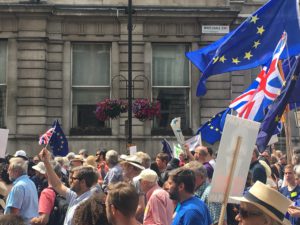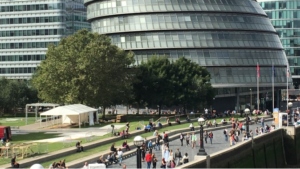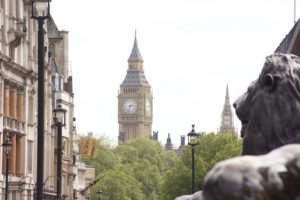Roger Evans is Senior Counsel at Barndoor Strategy and a former Conservative London Assembly Member and Deputy Mayor of London.
London is now over half way through Sadiq Khan’s term of office. The months have flown by, the Mayor has racked up lots of photo opportunities with celebrities but his record looks less glamorous. Transport for London struggles with a deficit caused by falling passenger numbers and an ill- considered fares freeze. Housebuilding figures remain stubbornly low. The most urgent problem is spiralling violent crime, manifesting itself in the growing number of murders, moped thefts and acid attacks.
Mayor Khan’s response is always to blame government cuts and there is certainly more that ministers could do. However, the buck passing and blame laying at City Hall indulges and even encourages a culture of low expectations. The fear is that if Sadiq actually got the money he demands, he wouldn’t know what to do with it.
A former Labour councillor recently confided that in his view Sadiq is there for the taking if the Conservative campaign focuses on his record.
With this in mind the Tories are selecting their candidate early and the process has already reached the shortlist stage. The intention is for a round of hustings over the summer followed by a vote of members to select a candidate in time for the autumn party conference in Birmingham.
The original list of applicants was never made public but I understand there was considerable interest, with over 30 names entering the fray. The lack of traditional big hitters leaves the contest wide open, but the winner will have more than 18 months to raise their profile in what is traditionally a gruelling campaign.
The three finalists are all London politicians – two members of the London Assembly and one borough councillor. The lack of MPs is a good thing, showing that London government has come of age and mayoral hopefuls can stand on their London experience without a national profile. There is no clear favourite – anyone could win this.
SHAUN BAILEY
Shaun grew up in a Ladbroke Grove council house, the son of a single mother. He was a youth worker for many years and did a stint as a policy advisor to David Cameron. Currently a list member at the London Assembly, he has established a reputation as a thoughtful scrutineer.
Shaun recognises that there are no easy long term answers to the knife crime epidemic. He plans to increase police resources by cutting waste at City Hall and in the Mayor’s Office for Policing and Crime. On housing, he describes Sadiq’s record as “abysmal” and wants to alter the London Plan to free up industrial land for residential development. He is a good media performer and has produced a decent video to introduce his campaign.
Shaun is an energetic and resilient politician with a valuable ability to motivate people, though he has yet to develop a strong policy programme. Hopefully this will emerge during the hustings.
ANDREW BOFF
Andrew was born in Hillingdon where he was a councillor at the start of his political career and leader for two years, before moving on to Hackney and then the London Assembly, where he is another list member with eight years experience under his belt.
He was a tough scrutineer during Boris Johnson’s time as Mayor, opposing a number of initiatives including the ill-fated Garden Bridge. This independent streak meant that the move to opposition in 2016 was easier for him than for many other Assembly Members. He is known for ferocious questioning, which often exposes Sadiq’s weak points and causes the Mayor to lose his temper.
Andrew tried for the candidacy in 2000, 2004, 2008 and 2016. Perhaps it will be a case of fifth time lucky. He wants to take the campaign to unexpected places and espouses policies which can sometimes be outside the Conservatives’ comfort zone. In fact, his ideas can challenge Labour’s comfort zone as well.
He wants to treat the crime wave as a public health emergency, using techniques that have been pioneered in Scotland. Controversially, he believes that regulating cannabis use would cut off gangs from a major source of cash and reduce levels of violence. Thinking like this could find favour with younger voters who are not traditional Conservatives.
Andrew sees the need for a swift solution to the housing crisis and he wants to encourage modular building and self building to speed up the construction process. He has stated that for most of London he wants a height limit of six storey’s for residential properties, with tower blocks largely prohibited.
His ideas are libertarian and challenging to the traditional Conservative base, but they will also challenge Sadiq Khan, a Mayor not known for making brave or original decisions.
JOY MORRISSEY
Joy has been a British citizen for a decade, although she hails originally from the USA and did some acting in Hollywood. A councillor in Ealing, she also works for the Centre for Social Justice, a Conservative think tank.
Her campaign aspires to be inclusive, seeking to engage voluntary groups and residents’ associations across the capital. This is a smart move and probably the best way to raise her profile with over eight million Londoners. There is a lot of ground to cover and never enough time to speak to everyone.
To fight crime she wants to engage more police cadets and raise stop and search activity at neighbourhood police team level. Greater use of GPS tagging would be deployed to reduce reoffending.
To build more houses she wants to see investors and pension funds working with London’s local authorities to match money with available construction sites.
Interestingly, she wants to see more decentralisation of power to London’s government and is in favour of the Greater London Authority having wider tax raising powers. The hope is that greater power will encourage greater responsibility at City Hall.
*
These are three credible candidates with valuable experience gained in the city they hope to run. Only one can be selected, but the winner could do worse than co-opt some of the unsuccessful contenders into their team. The real journey will start in Birmingham, but there is a long way to go before then.
Many thanks to Roger Evans for this, his debut piece for On London. Roger Tweets here.
LONDON AND BREXIT: Will leaving the EU be good or bad for the capital? On London and the illustrious London Society have jointly organised a debate about this crucial question. Anti-Brexit campaigner Andrew Adonis, former Boris Johnson adviser Daniel Moylan and Lib Dem AM Caroline Pidgeon have already been booked to speak. Buy your tickets here.











